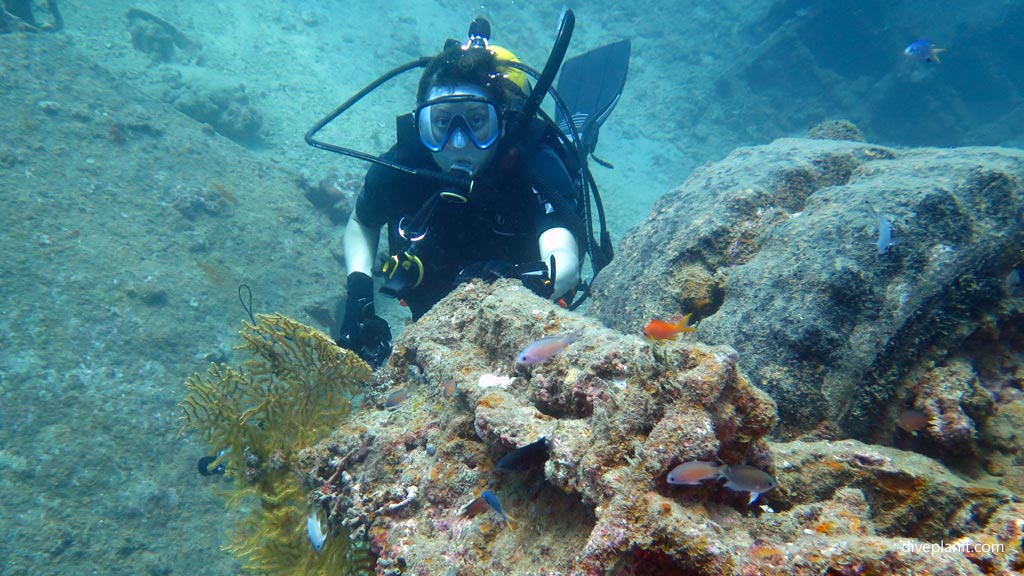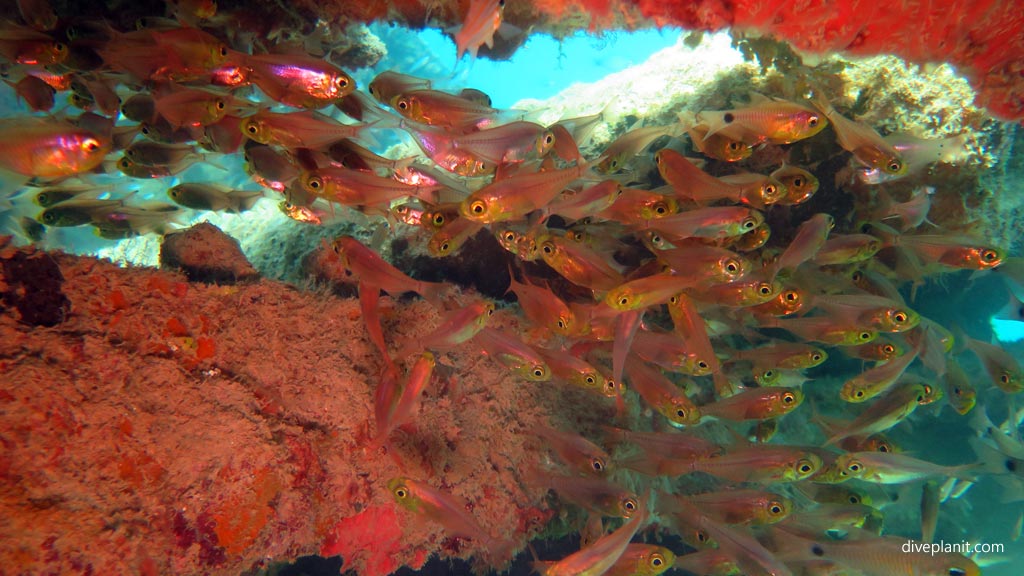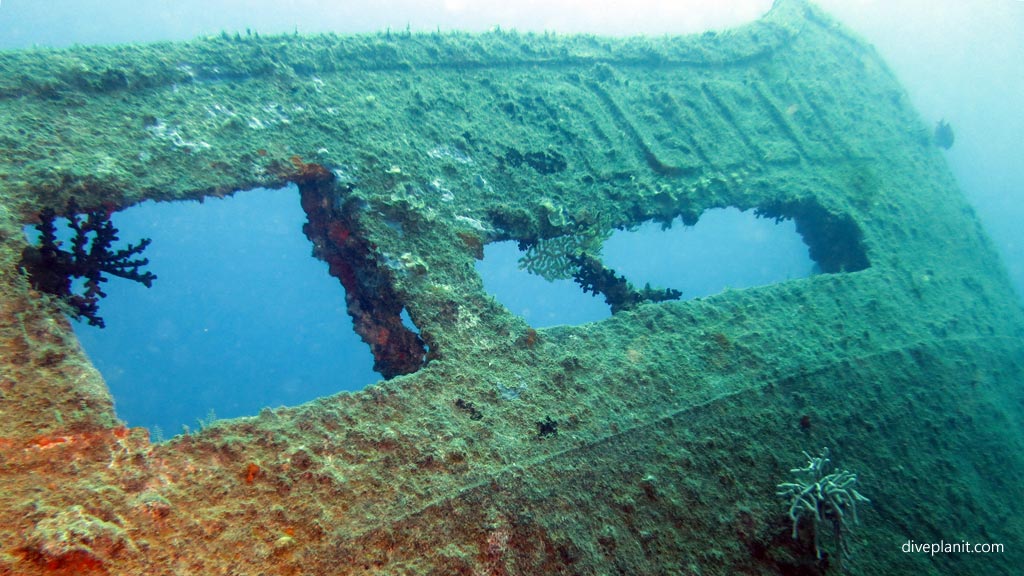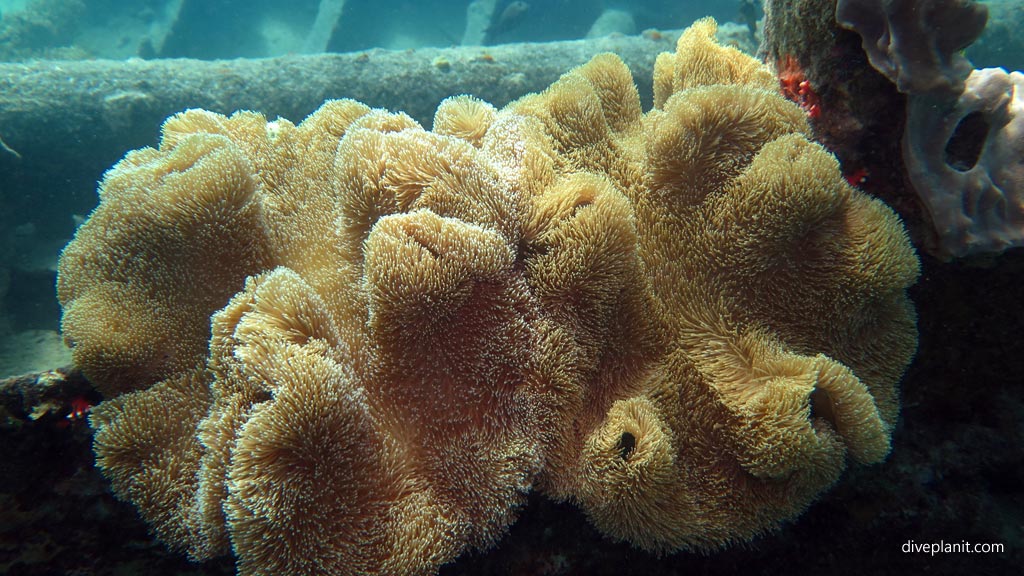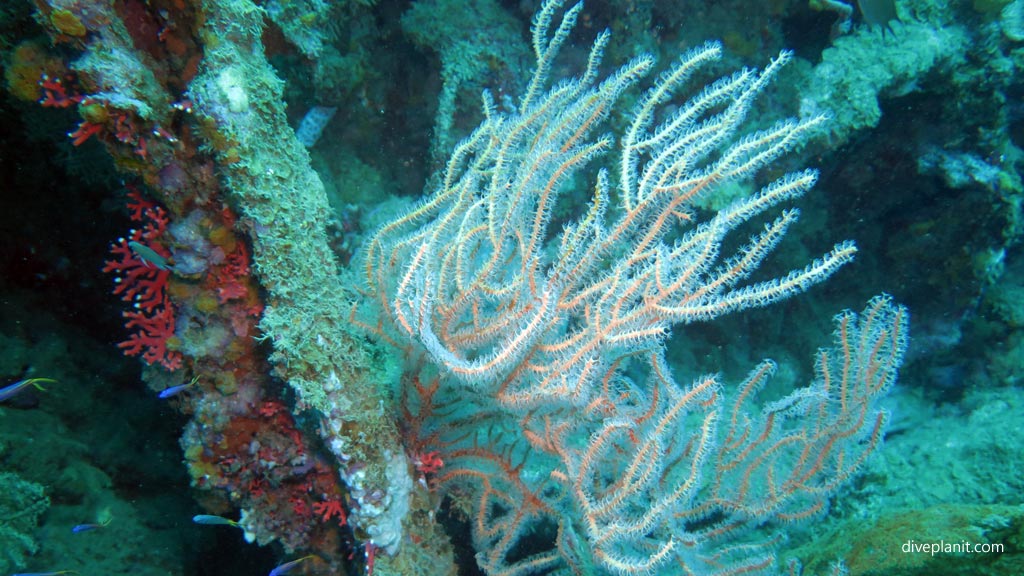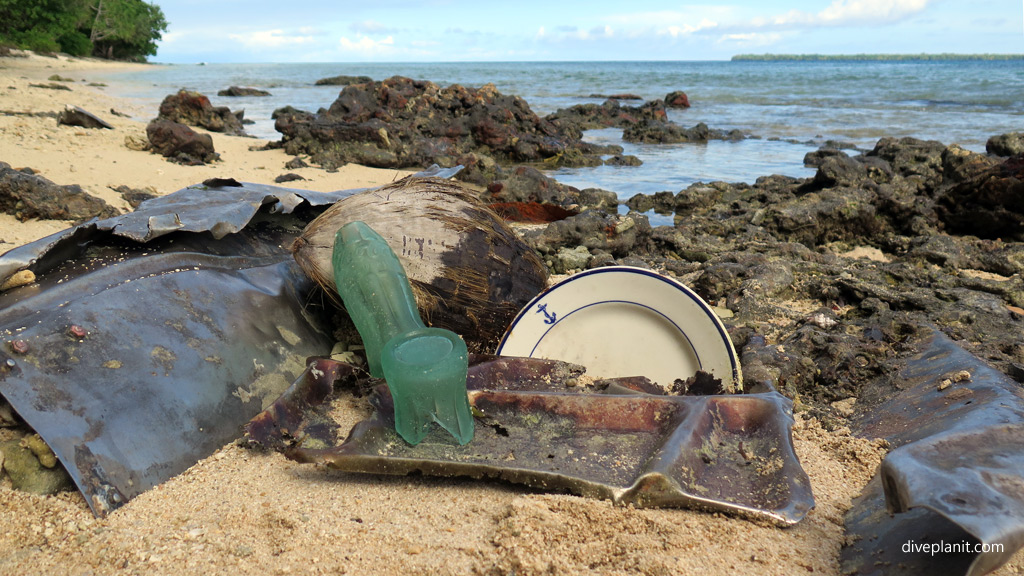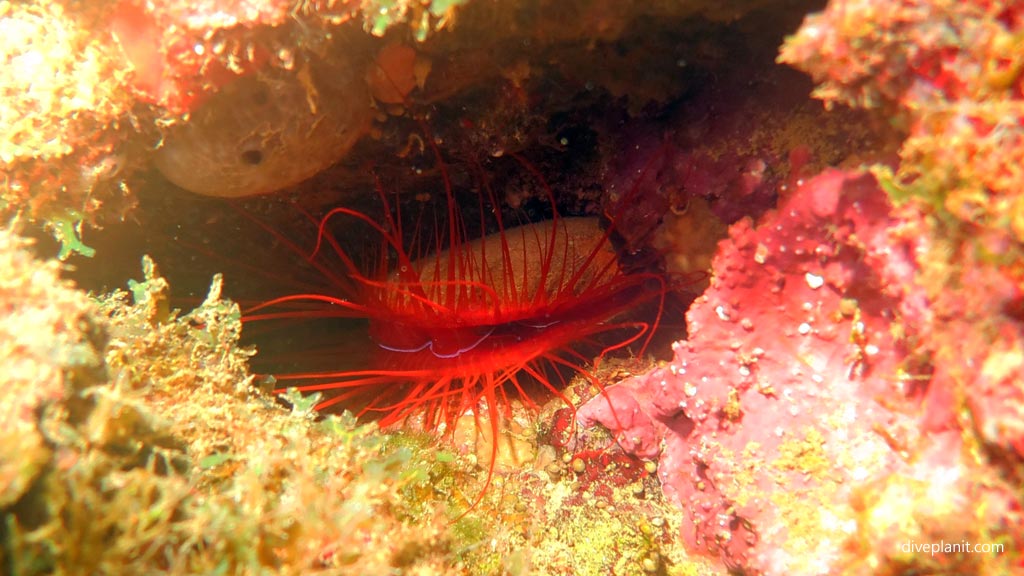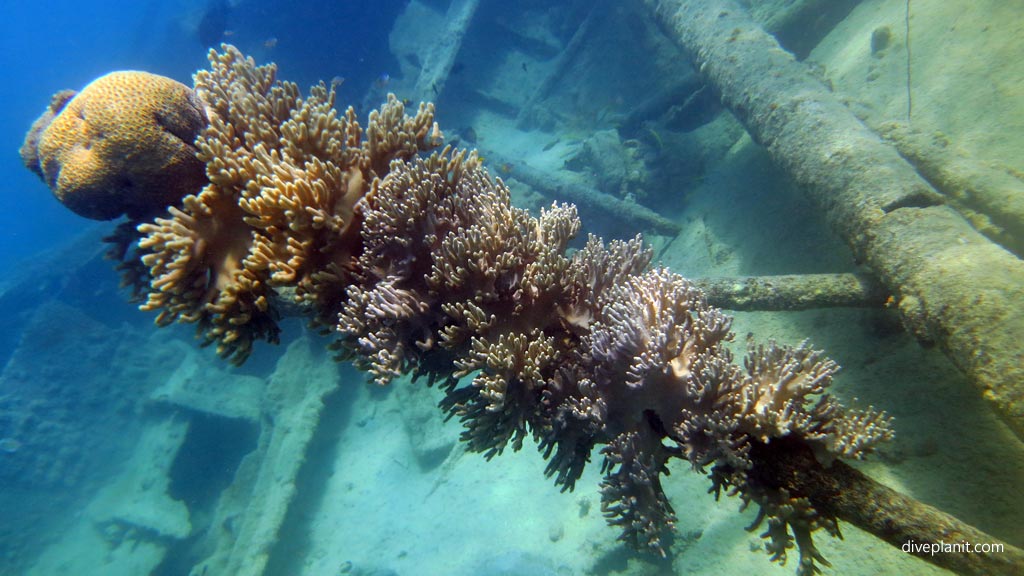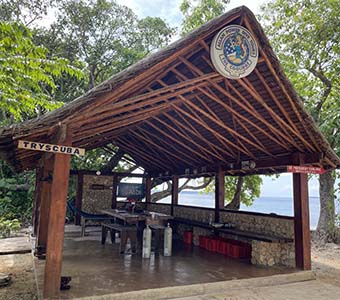| Site Type: | Wreckage turning to reef |
| Depth: | Top: 15M Median: 20M Bottom: 28M |
| Location: | The dive site can be done as a shore dive from Million Dollar Beach |
So named by the price tag that the Americans put on the vehicles of their task force, that they tried and failed to sell to the French, the English and finally the locals – in turn – before bulldozing the whole lot into the ocean to spite them all!
A dive site of tracked and wheeled vehicles, and various other machines (and boats!) in about 15-25m of water just off the beach near Luganville, Espiritu Santo, Vanuatu. Here’s a short video of the different kinds of wreckage you’ll find at Million Dollar Point.
Now its wreckage turning to reef so you get the best of both worlds.
We were diving with Santo Island Dive and dropped in from their boat at the east end of the wreckage, traversed west at about 25m, then returned back on about 15m after encountering the Dedele.
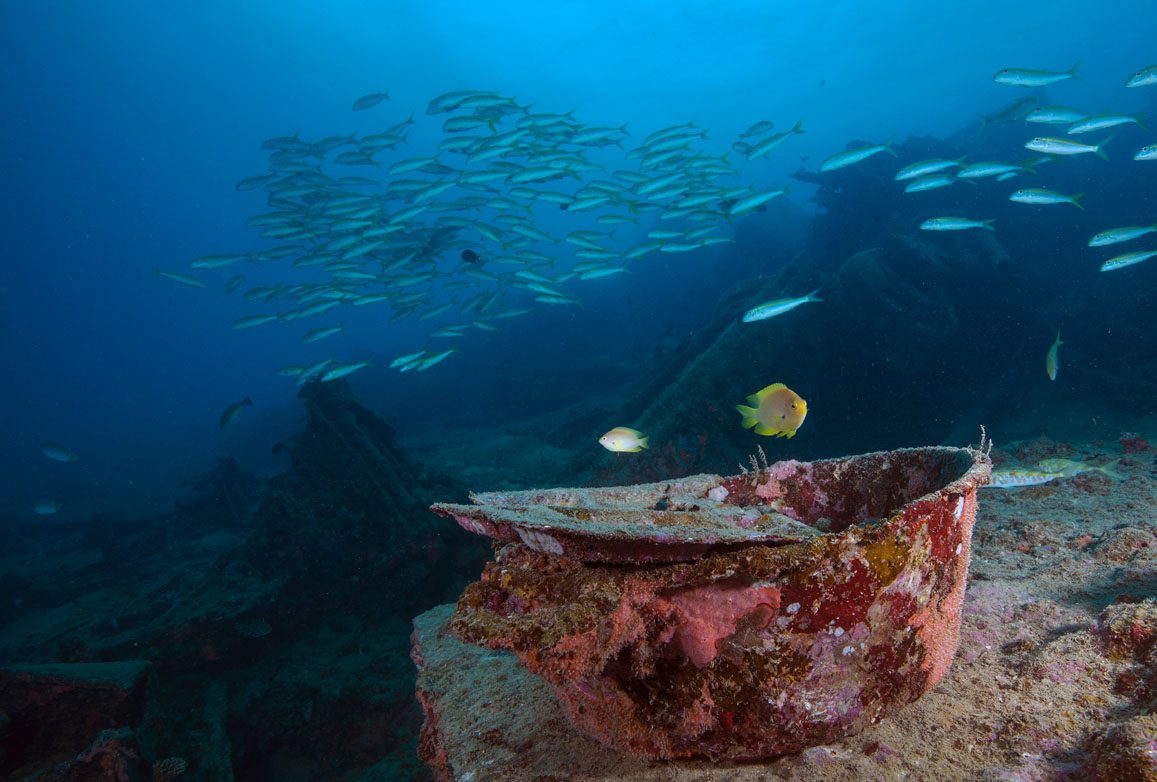
The water is usually pretty clear (as long as there hasn’t been a lot of recent rain), as the channel is tidal and flushed with clear blue pacific water twice daily. There are lots of trucks everywhere and tumble of double wheel bases of articulated trailers.

Some standing almost vertically with wheels in the air like windmills.

There are also lots of tracked vehicles and sometimes just such a jumble of twisted wreckage that it’s hard to distinguish the individual vehicles and components.
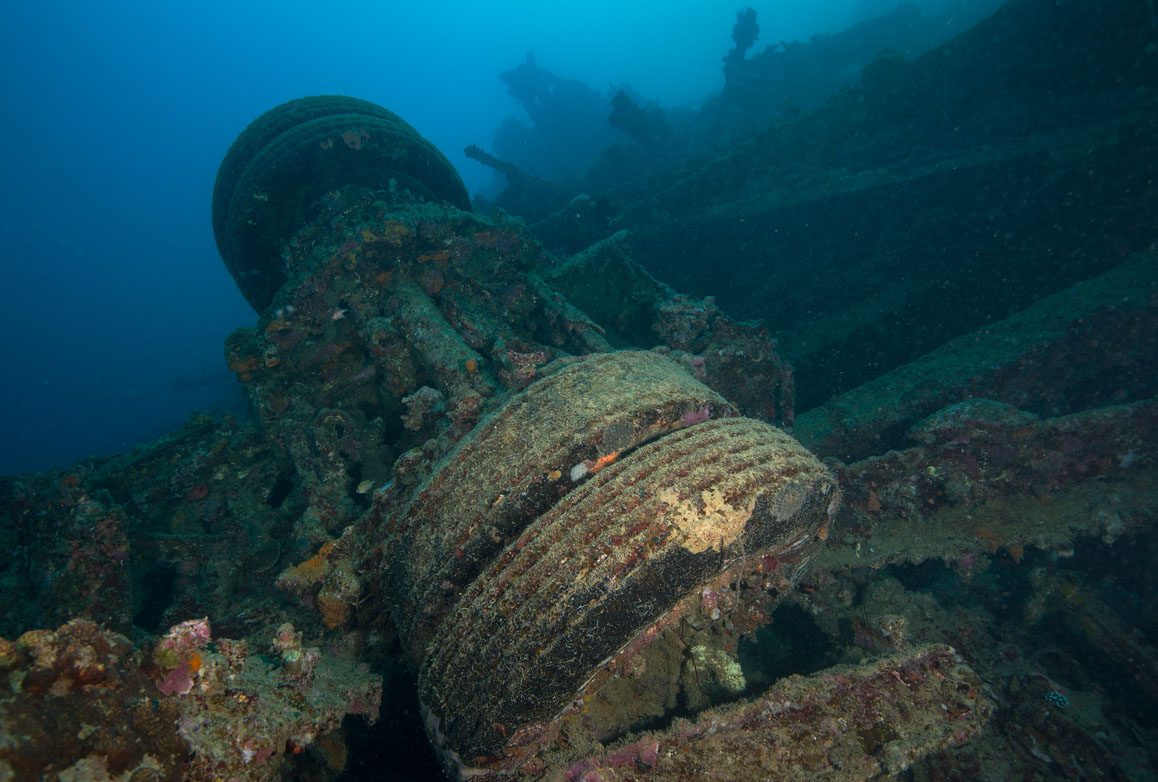
Though, at one point I could clearly recognise a fork lift. In some places bits of reef have started to grow.

A few soft corals here and there and plenty of underwater lichen.
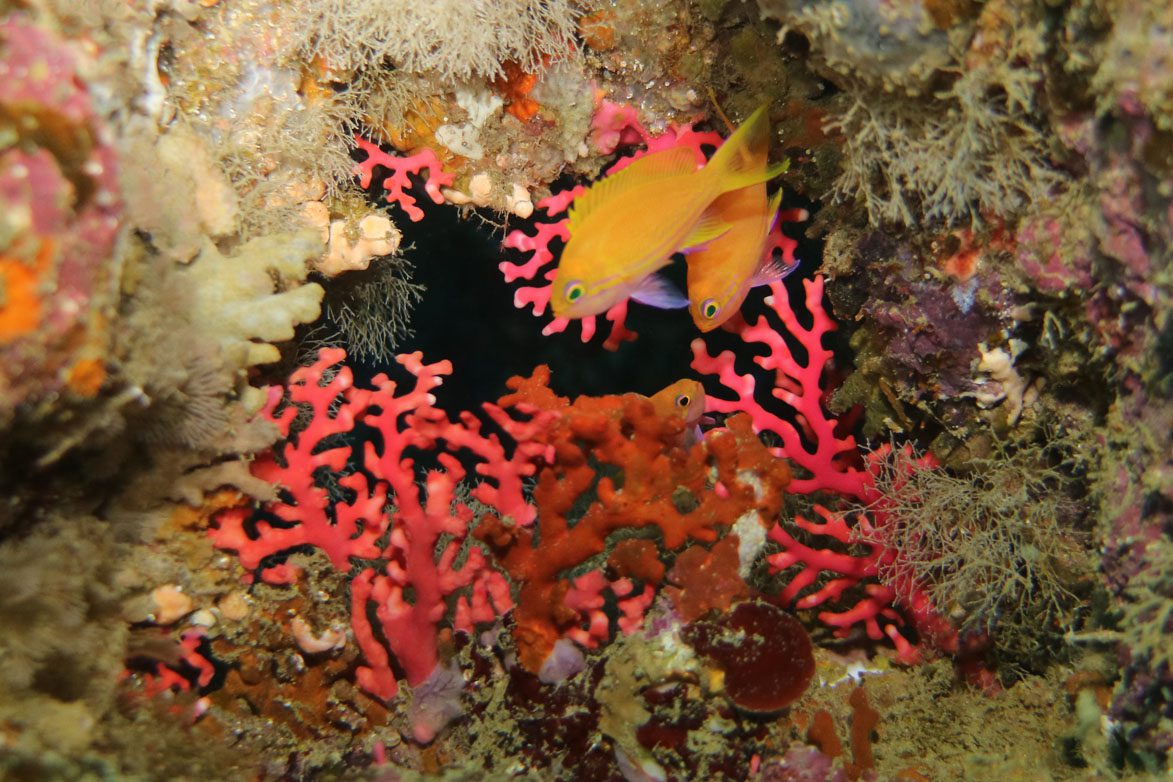
There are also fans and ferns and lots of reef fish, including this Hogfish, have started to call the place home.
One such place is a salvage tug that arrived much later to salvage God knows what and ended up joining the rest of them and merging with the overall wreckage.
There is also the Dedele, a small inter-island trader that was, apparently, deliberately scuttled here.
Another thing to note was that the soft corals appear to start on the thinnest parts, especially those that stick out (into the stream which is obviously tidal) or on the uppermost edges of the decking where you might expect the handrails to have been.
There is also some wreckage on the shore that seems to have merged with the general conglomerate of rock and coral sand. There are forged engine parts and a mixture of shells, and nonferrous metals like bits of copper and brass which retain their shininess and standout against all else in the strong sunlight.
There are also some stainless steel remains of what looks like a balti-style lunch tray and well as a porcelain dinner plate; and not to mention the Coke bottles in their original thick greenish glass which is perhaps not so offensive as the plastic that Coke now insist on littering our planet with. Another interesting point is that the tyres are in exactly the same state that they were in when they were dumped nearly 70 years ago.
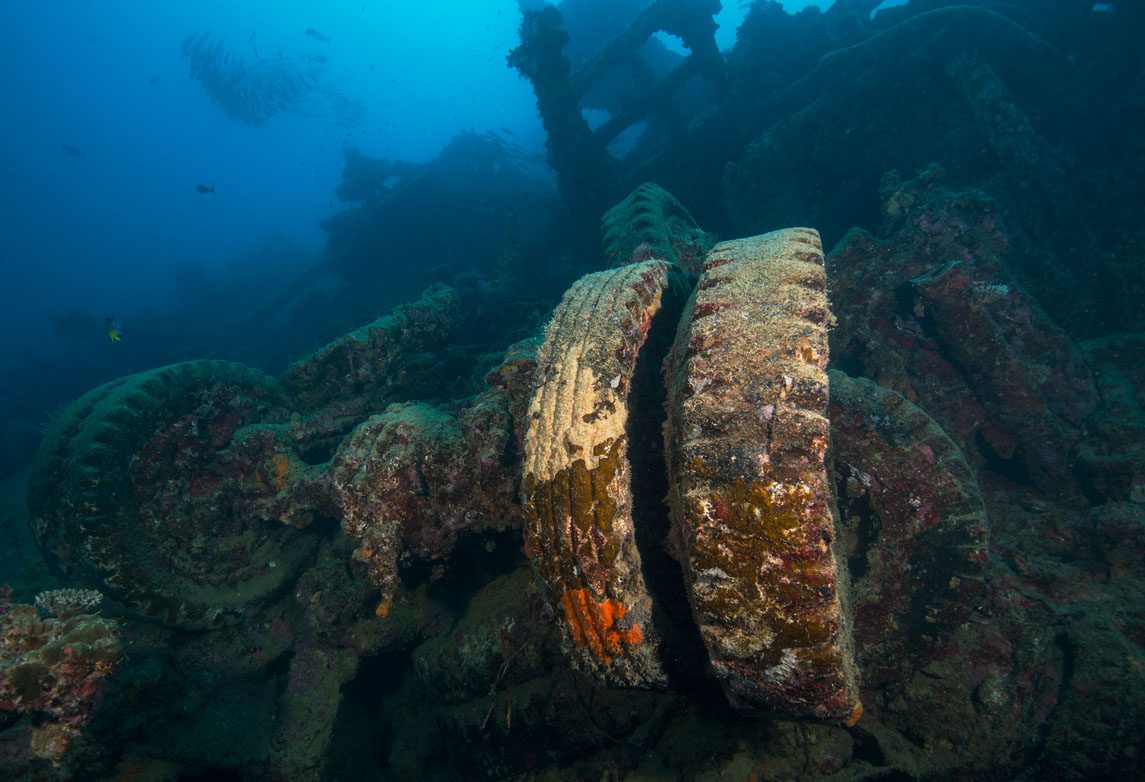
They seem to have been completely unaffected by the seawater. Potentially because there is little growth on them and not much to erode. This is in contrast obviously to the largely steel components which are significantly degraded.
A tyre in the short tidal range of the shoreline was showing a little wear and tear from 70 years of wave action and a little bit of its wire was showing through. Otherwise it was in pretty good condition considering the 70 years it had been there. I hope I’m in such an impervious state when I’m 70 having been in and out of the briny most of my life!
There is also an electric or disco cam. These guys (/gals) always seem to exist in isolation. It would be interesting to know where the next nearest electric clam is and how these guys procreate. (That would definitely be an interesting sidebar).
Coral grows anywhere there is current: any and every strut just sticking out into the stream soon (well relatively) grows coral of one kind or another.

